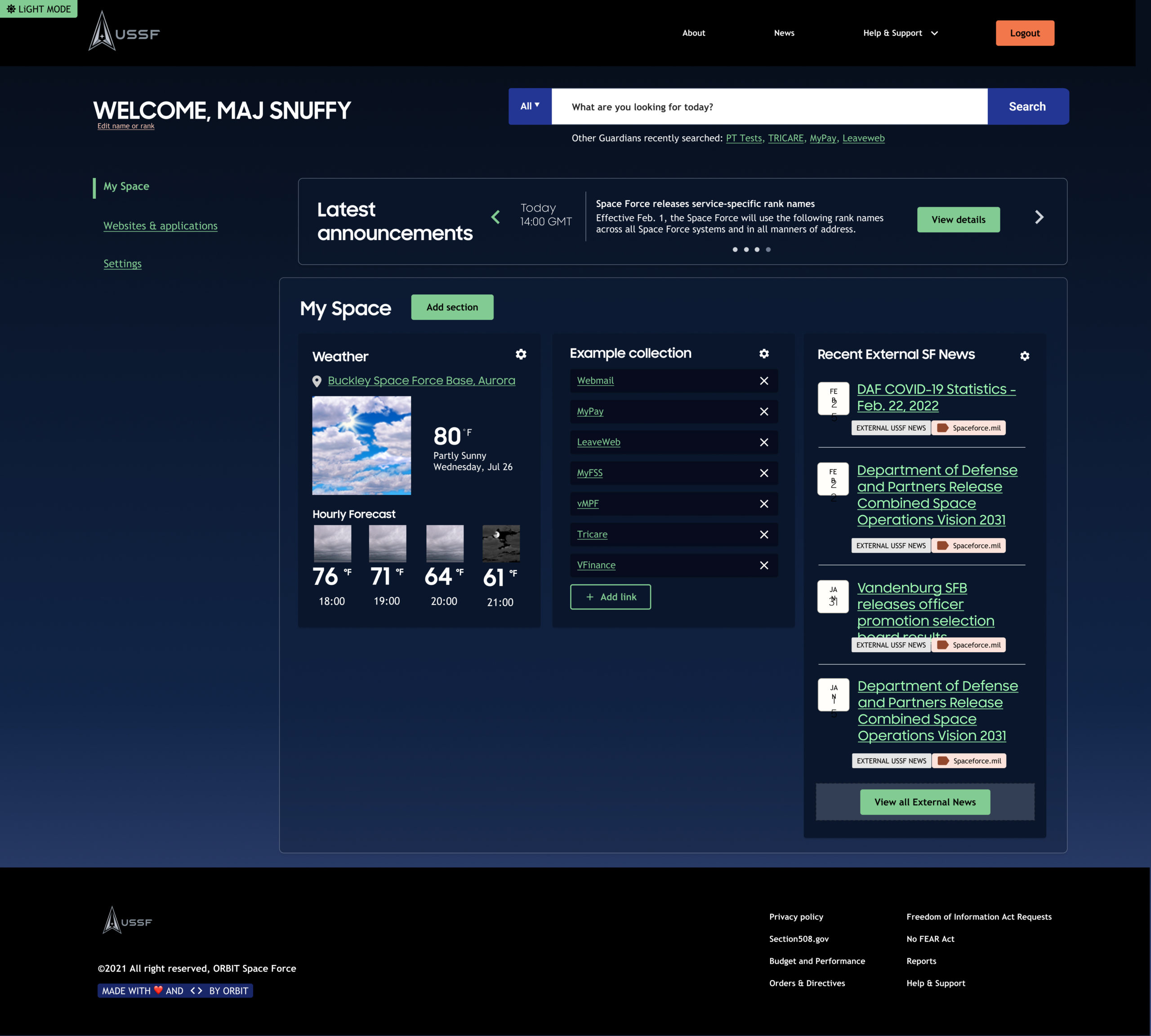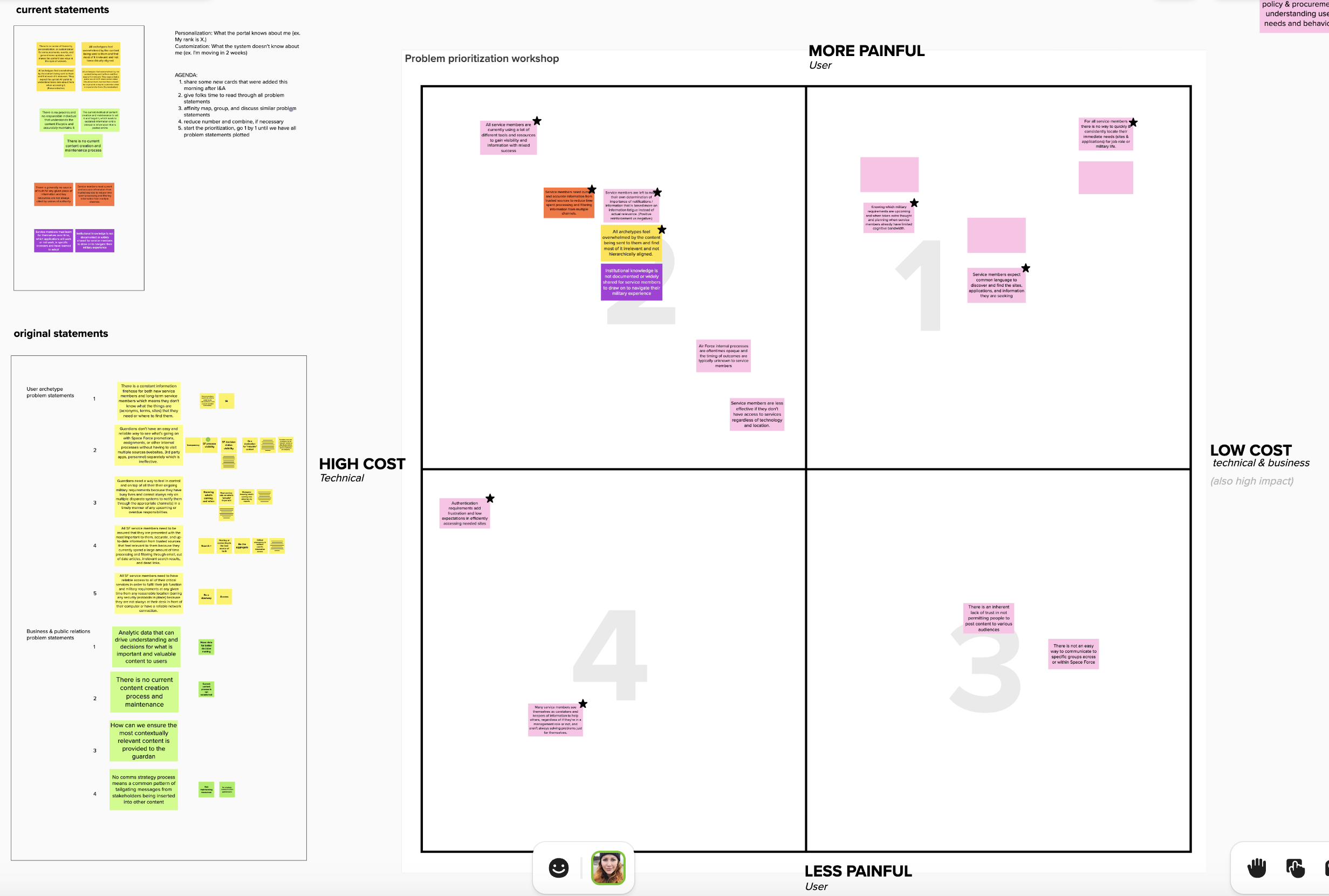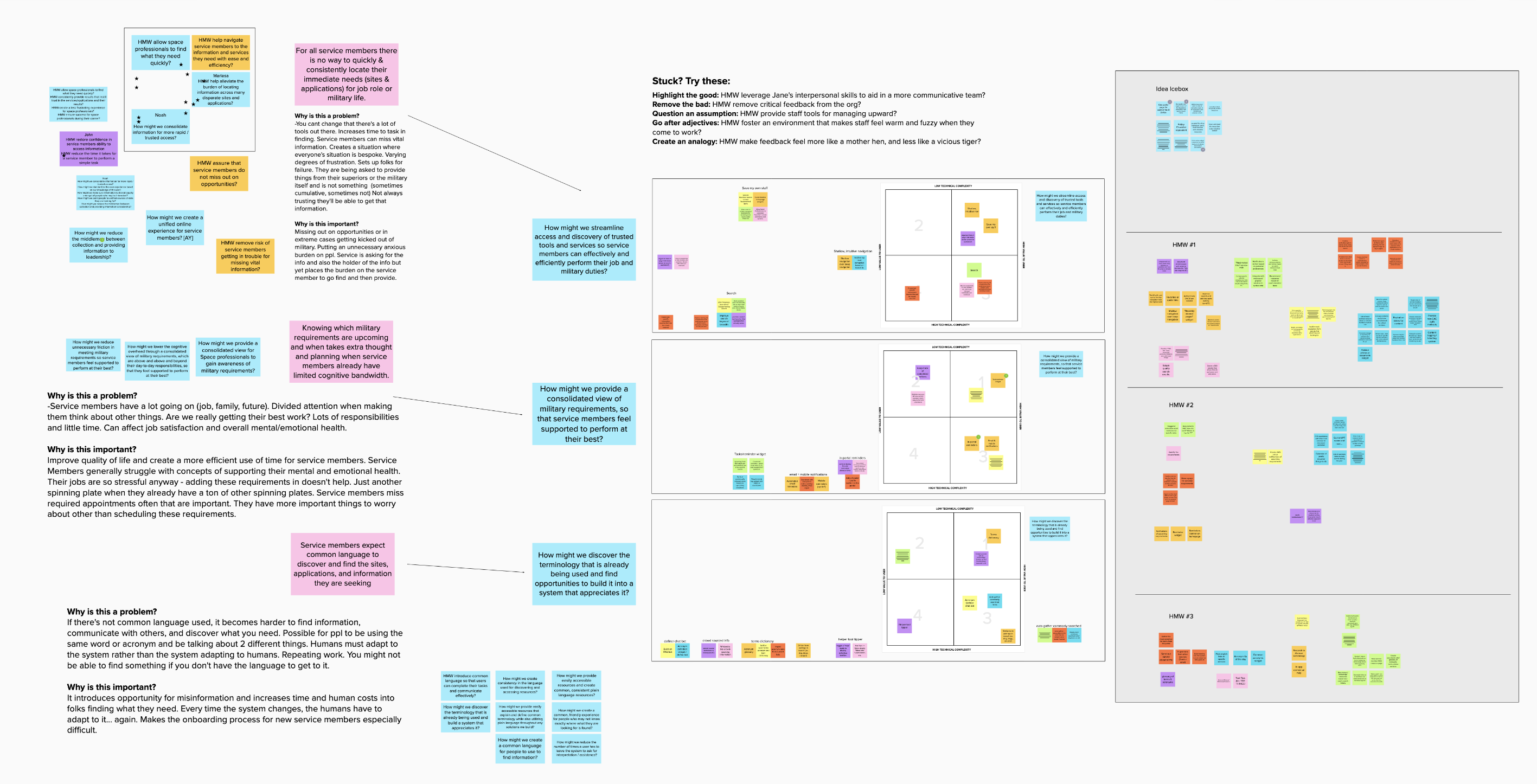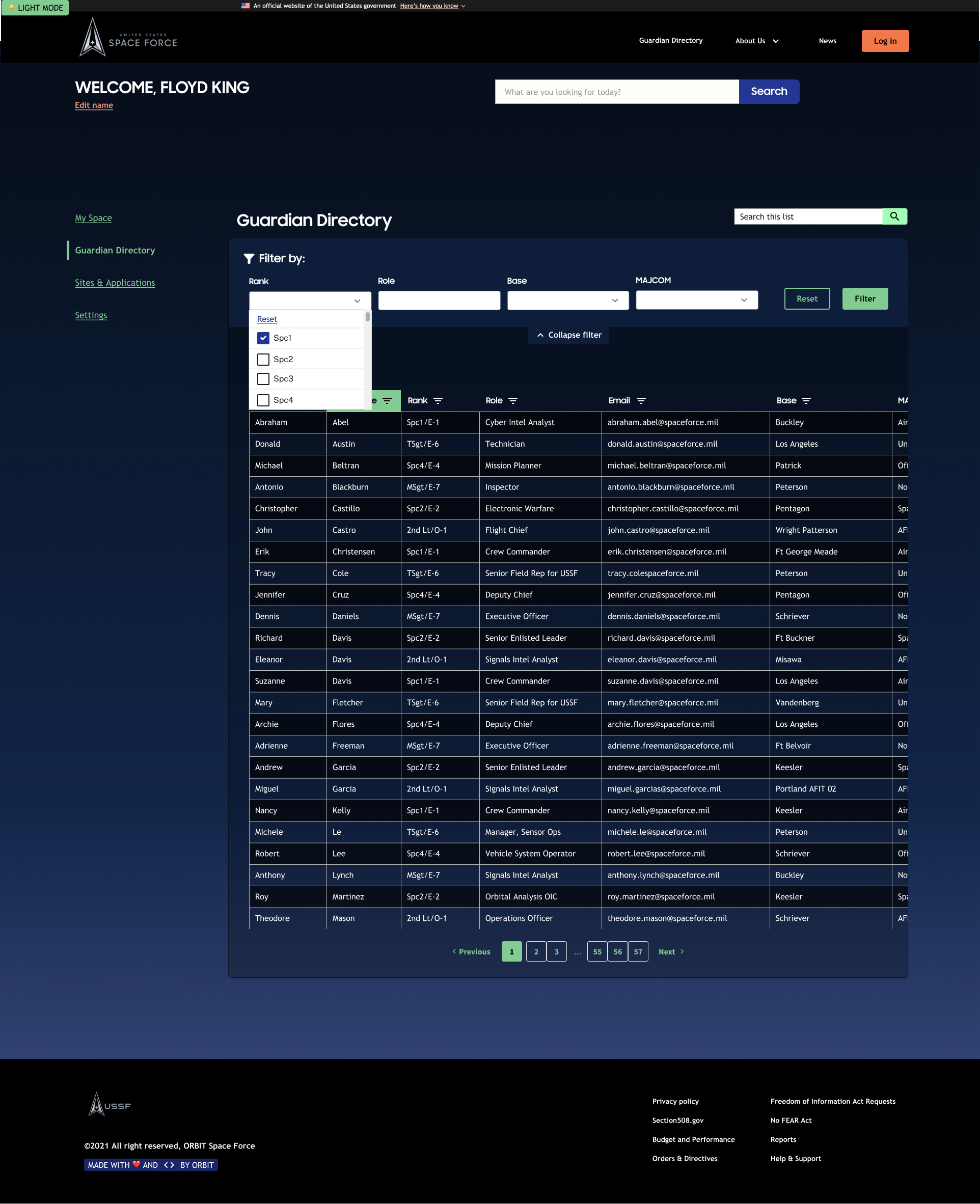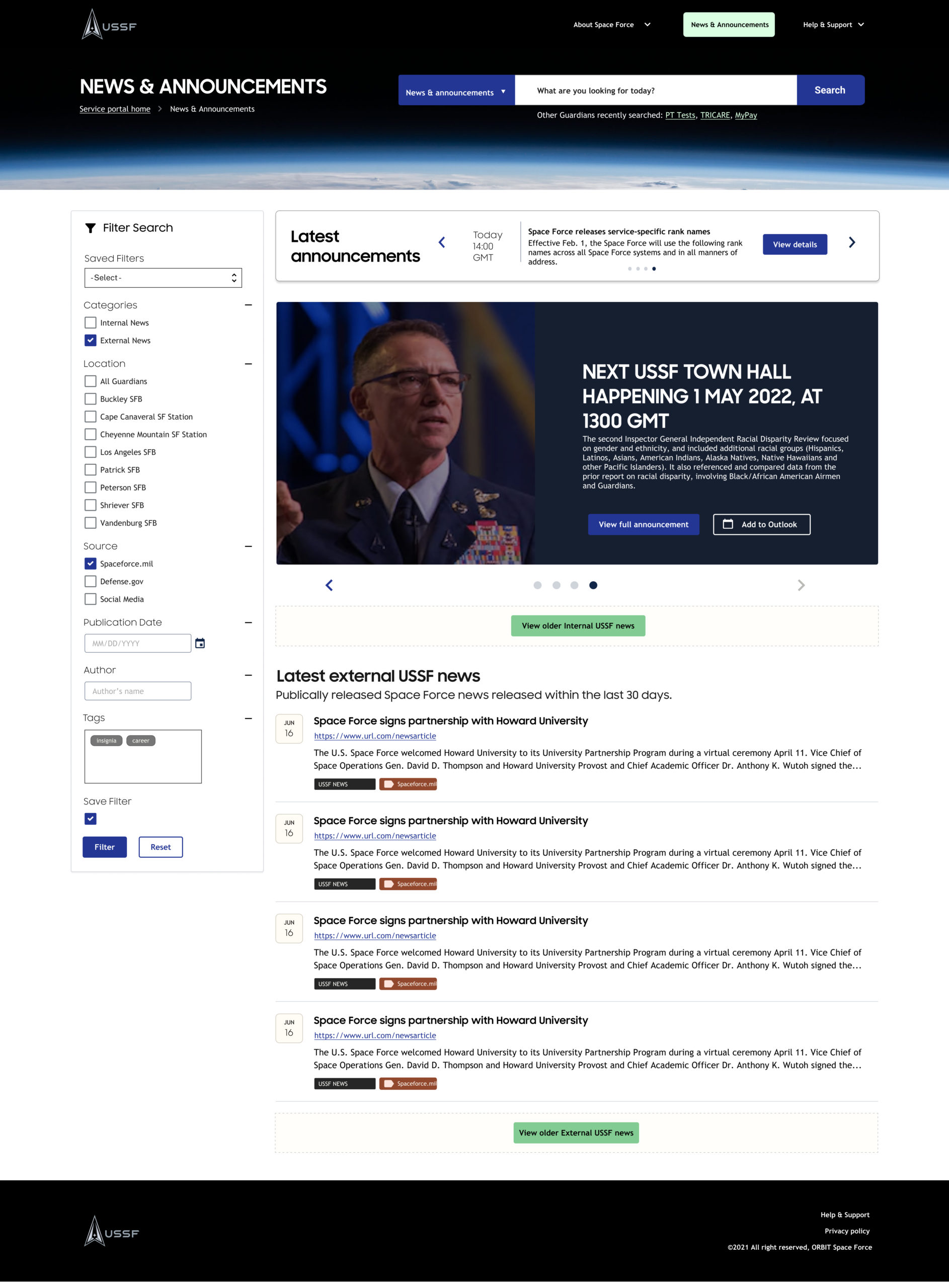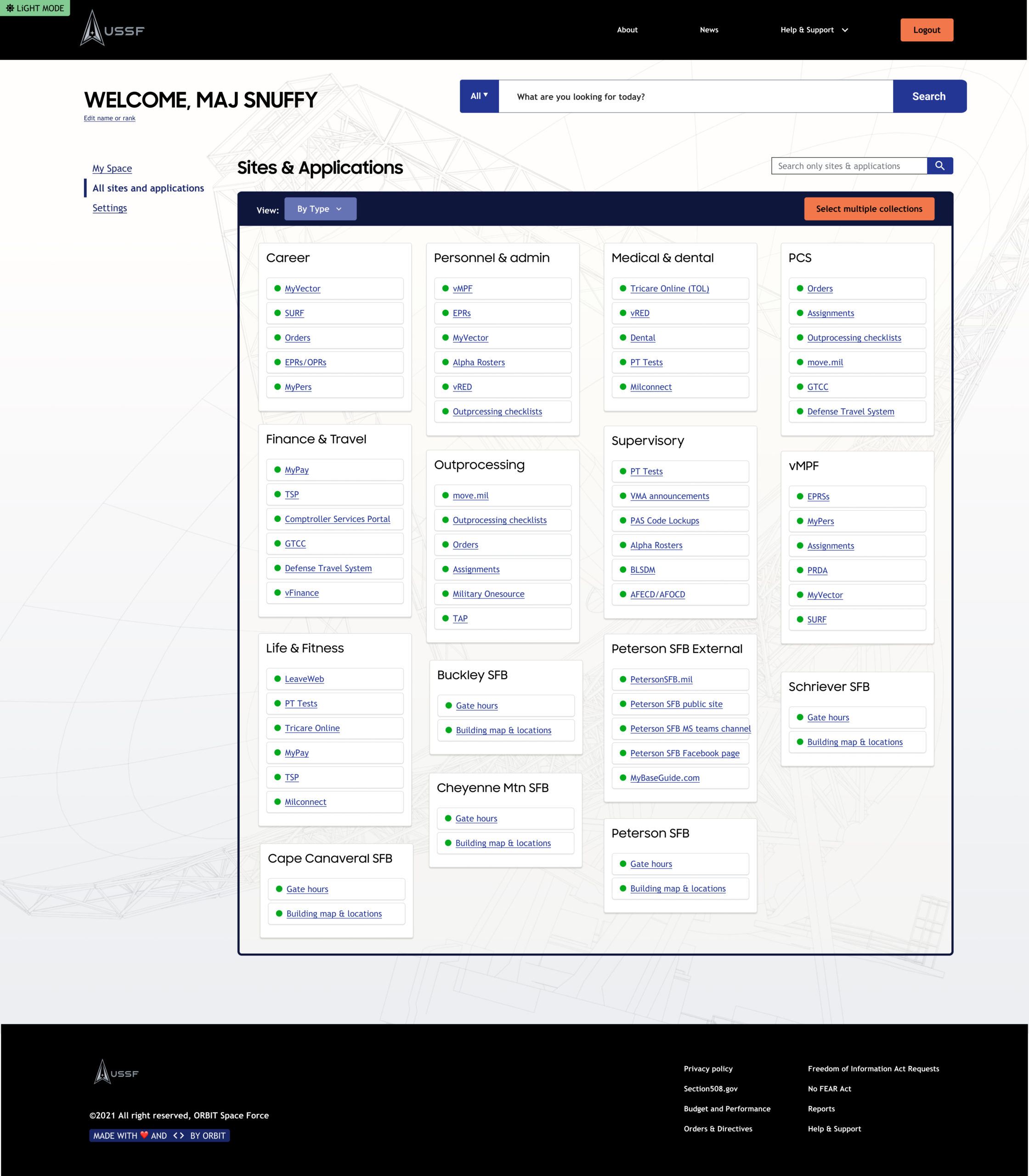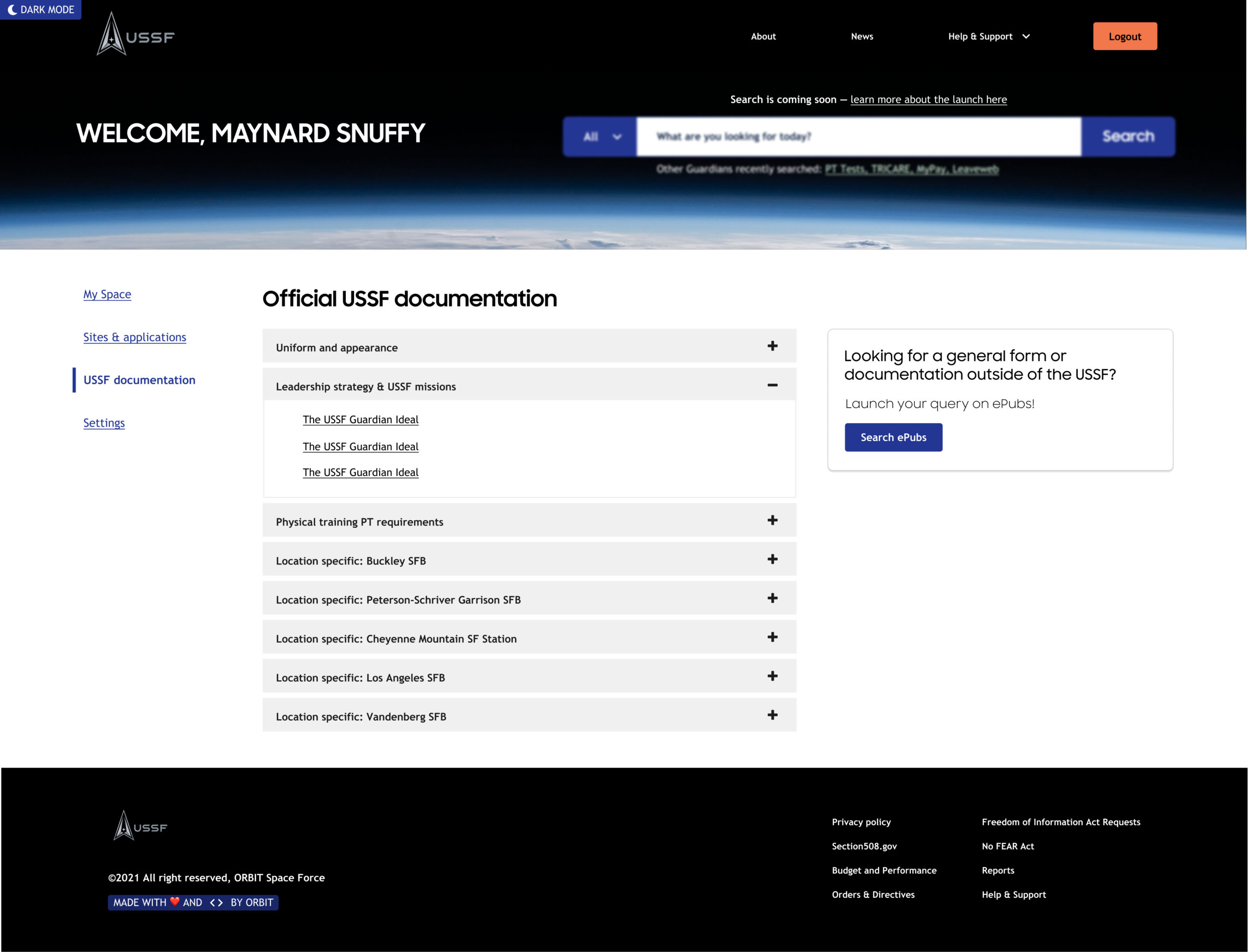CLIENT
United States Space Force
MY ROLE
Design and Research Lead (UX, research, strategy, frontend)
OVERVIEW
The United States Space Force is the service branch of the U.S. Armed Forces and the world's only dedicated independent space force. The DoD reached out to us to build their first internal service portal for Space Force employees and service members.
PROBLEM STATEMENT
Military service portals have historically provided access to service-specific news, resources, and other sites or applications required for military life and job roles. The general goal of any military service portal is to quickly locate and access policies, procedures, and support, among other documentation.
As Space Force is being stood up as the newest branch of the military, the team's objective was to create a single venue for Space Force personnel to use as a window into their full career and a doorway through which they can access the vital sites and services they need.
CONSTRAINTS
During Discovery and Framing, our early research showed that the current deluge of information and disparate sites by which service members must piece together relevant and timely information tended to be more hindrance than help.
Methods
Archetypes
Analytics
Concept &
Usability Testing
Surveys &
Async research
Information Architecture
Design Studios
Research Methodology
Discovery and Framing
The project started with a 12 week long discovery and framing. We spent this time interviewing stakeholders and service members to uncover goals, anti-goals, pain points, and gain a better understanding of what life as a Guardian in the Space Force looked like.
Through workshops with our stakeholders, we identified how success would be defined on the project, as well as the anti-goals for the project. We produced a stakeholder map, and identified risks and mitigations.
We held four of rounds of interviews during this phase, and came out with a solid understanding of who are archetypes were, which archetypes to prioritize moving forward, and what Guardians expected out of a service portal. Some early insights we uncovered were:
- Both customization and personalization were mentioned across all archetypes and job roles as vital. “Personalization” was defined by what the portal knows about the user (ex. Their CAC reader will tell the system what rank they are).
- “Customization” was defined as things the system did not know about the user (ex. The service member is moving in two weeks and they need information on outprocessing).
- Service members considered a service portal’s primary function as a gateway to other needed tools or services, rather than the “final destination”
- After that primary function is satisfied, service members considered a service portal’s secondary function was a repository of information like news, policy information, announcements, etc
- The sheer quantity of content that current service portals provide (in this case, the Air Force portal) means that there is an expectation around “search” being robust and easy to navigate
- Important information was often spread between various channels, and some of the key resources were not always coming from “official” documentation. For example, service members often got the most up to date information in places like Reddit, Facebook, or Discord before they were published on “official” channels
- There was a sense of futility and acceptance from service members that government systems are inherently terrible and individuals will often have to create their own “self-hack” systems to get their job done
We took this information and moved into framing, bringing the entire team along for the ride. Research is such a vital piece of human centered design, and it was important that everyone on the team–from engineers, to product, and our stakeholders–had a solid understanding of the current space professional experience. We encouraged everyone to sit in on research sessions and participate in our “Insights and Actions” workshop (where essentially we synthed the research as a group). We ran many more workshops and collaborative exercises with the entire team, such as: design studios, lean value trees, user story mapping, “How Might We” & solutioning, and problem statement refinement.
At this point we had done a handful of iterations on our low-fi wireframes, and had our first high fidelity designs.
Research Methodology
Delivery
We moved into delivery with a solid understanding of what service members wanted out of their portal, and high confidence that we could provide an MVP that would be intuitive and easy to use and meet our service member’s early needs.
As of this writing (August 2023), we have completed 11 rounds of research, and continue to iterate on existing features and concept test new ones. In my role as design and research lead, I oversee research and design efforts, as well as project strategy. I have been fortunate to work with anywhere from 1-3 other designers on the project at any one time, and I pride myself on my ability to uplift and empower my teammates.
At this stage in the project, usability and concept testing are our main focus. As we have matured, we’ve added a robust analytics platform that further aids in quantitative research. I have worked in tandem with my team to bring new features to the portal that are centered around our users.
Archetype Development
Longterm Service Members
These are longterm, career service members that have transferred into the Space Force from the Air Force. They are familiar with air force's protocols and policies, which layed the foundation for the Space Force. This archetype makes up the majority of the current Space Force.
Service transfers
These may also be "career" service members, but they are transferring from a branch of the military that is not the air force. They often have not yet been transferred to a Space Force base, and are working from their previous service's base. This archetype is not familiar with Air Force policies and protocols and in turn have a harder time onboarding than other archetypes.
Content Managers
Content managers may be made up of service members or civilians. They are in charge of creating and managing the content on the portal and need a CMS that is easy and intuitive to use.

